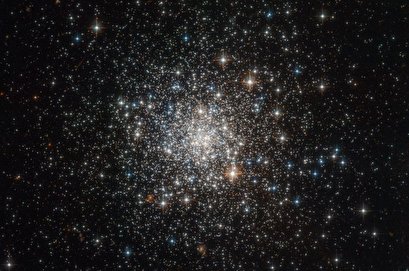TEHRAN, Jul 3 -"This validates the predictions of the prevailing cold dark matter theory," said researcher Arya Farahi.
 TEHRAN, Young Journalists Club (YJC) -Scientists have discovered a fairly consistent relationship between the mass of ordinary matter and hot gas, and the mass of dark matter in galaxy clusters.
TEHRAN, Young Journalists Club (YJC) -Scientists have discovered a fairly consistent relationship between the mass of ordinary matter and hot gas, and the mass of dark matter in galaxy clusters.
Researchers used a combination of complex statistical models and algorithms to analyze data collected by the Local Cluster Substructure Survey and tease out relationships between the three main components that make up galaxy clusters -- dark matter, hot gas and stars.
The data used for the analysis represented 41 different galaxy clusters. The observations were collected over a period of 12 years by a variety of telescopes, including the Chandra and XMM-Newton satellites, Subaru telescope, United Kingdom Infrared Telescope and the Planck satellite.
When scientists crunched the numbers, their models showed a consistent relationship between ordinary and dark matter. In each cluster, the mass of stars and hot gas totaled roughly the same fraction of dark matter mass.
"This validates the predictions of the prevailing cold dark matter theory," Arya Farahi, who helped conduct the study while a doctoral student at the University of Michigan, said in a news release. "Everything is consistent with our current understanding of the universe."
Scientists expect the new findings, published Tuesday in the journal Nature Communications, to offer insights into the physics of galaxy cluster formation and evolution.
"A certain amount of material within the universe collapses to form galaxy clusters," said Graham Smith, astrophysicist at the University of Birmingham. "But once they are formed, these clusters are 'closed boxes.' The hot gas has either formed stars, or still remains as gas, but the overall quantity remains constant.
In addition to revealing the internal mechanics of galaxy clusters, the new research could help cosmologists better understand how the universe continues to evolve and expand.
"Galaxy clusters are intrinsically fascinating, but in many ways still mysterious objects," said Smith. "Unpicking the complex astrophysics governing these objects will open many doors onto a broader understanding of the universe. Essentially, if we want to be able to claim that we understand how the universe works, we need to understand galaxy clusters."
Source:upi
 TEHRAN,
TEHRAN,